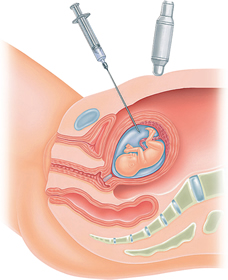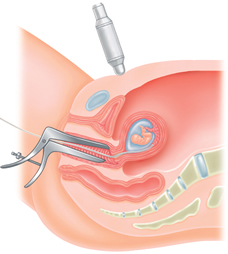Comparing Chorionic Villus Sampling and Amniocentesis
There are two ways of doing chorionic villus sampling. In the transabdominal method, a fine needle is placed through the abdomen to collect placental fragments. In the transcervical procedure, a thin tube (catheter) is inserted into the cervix. The method used depends on the position of the placenta and the doctor's training and expertise. During the procedure, ultrasound guidance is used so that the doctor can see the placenta's position.
CVS can also be done in a multiple pregnancy; in this case both the transabdominal and transcervical methods of collection may be used.
During amniocentesis, the doctor uses ultrasound to locate an open pocket of amniotic fluid. Under continued ultrasound guidance, a thin needle is placed through the skin of the abdomen and then through the uterus and into the amniotic fluid. A small amount of the fluid is drawn up into the needle and an attached syringe. A local anesthetic may be applied to your abdomen before the procedure to ease any discomfort.

Transabdominal procedure

Transcervical procedure